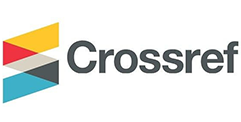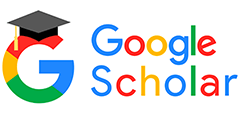The Linguistic Diversity and Ideology in the Linguistic Landscape of the Coffee Capital of the Philippines
DOI:
https://doi.org/10.57106/scientia.v12i2.164Keywords:
language mixing, language position, space, linguistic landscape, language ideologiesAbstract
This paper aims to show the extent of linguistic diversity and ideology in the multilingual advertisements or the linguistic landscape (LL) of Amadeo, a segregated town in the Southern Tagalog, Province of Cavite, Philippines. The LL, considered the country's coffee center, will be explored, considering the town's diverse language status, as well as its current economic challenges. The research will focus on 14 barangays that have been molded by 'top-down' and 'bottom-up' forces in the context of the complicated link between the languages utilized and their depiction in the chosen coffee-related LL for which Amadeo is well known. Because English is the most used foreign language in town, particularly in product advertisements, the researcher goes on to define the level of English language visibility, diversity, ideology, and position in the labeling of store signs, coffee products, and emblematic structures in Amadeo's LL. The study is investigated utilizing Sebba's framework on the unit of analysis, which covers (a) language-spatial linkages, (b) language-content relationships, and (c) language mixing as reflected in signages. Extensive documentation of LL items will be gathered and determined only based on frequency count. The frequency count results for each unit will be represented in the coding chart. The study will determine whether there is a high level of English visibility in the LL across 14 barangays in Amadeo, because the proponent believes that the English language's informative and symbolic functions in the LL serve to communicate the coffee products' essential features and details that entice educated local and foreign tourists, while also exuding modernity, sophistication, and globalness. It is also claimed that the town's business and tourism, rather than the preservation of its indigenous culture, are the primary driving forces determining Amadeo's spatial practice, symbolic construction, and language ideology as the coffee capital of the Philippines.
Downloads
References
Akindele, Dele Olufemi. 2011. “Linguistic Landscapes as Public Communication: A Study of Public Signage in Gaborone Botswana.” International Journal of Linguistics 3(1) doi: https://doi.org/10.5296/ijl.v3i1.1157 DOI: https://doi.org/10.5296/ijl.v3i1.1157
Al-Athwary, Anwar. 2017. “English and Arabic Inscriptions in the Linguistic Landscape of Yemen: A Multilingual Writing Approach.” International Journal of Applied Linguistics and English Literature 6, 149. doi: https://doi.org/10.7575/aiac.ijalel.v.6n.4p.149. DOI: https://doi.org/10.7575/aiac.ijalel.v.6n.4p.149
“Amadeo.” 2018. Philcoffeeboard. Retrieved from https://philcoffeeboard.com/amadeo/
Ambion, Larry. 2013. “Linguistic Landscape as a Reflection of the Linguistic and Ideological Conflict in the Coffee Community of Amadeo.” Prime Research on Education Journal.
Astillero, Susan. 2015. “Linguistic Schoolscape: Studying the Place of English and Philippine Languages at Irosin Secondary School.” Retrieved from http://www.vnseameo.org/TESOLConference2017/materials/11_Susan%20Fresnido%20ASTILLERO_LINGUISTIC%20SCHOOLSCAPE.pdf
Backhaus, Peter. 2006. “Multilingualism in Tokyo: A Look into the linguistic landscape.” International Journal of Multilingualism 3: 52-66. doi: https://doi.org/10.1080/14790710608668385. DOI: https://doi.org/10.1080/14790710608668385
Ben-Rafael, Eliezer, Elana Shohamy, Muhammad Amara, and Nira Trumper-Hecht. 2008. “Linguistic Landscape as a Symbolic Construction of the Public Space: The Case of Israel.” International Journal of Multilingualism 3, no.1: 7-30, doi: https://doi.org/10.1080/14790710608668383 DOI: https://doi.org/10.1080/14790710608668383
Bhatia, Tej. 1987. “English in Advertising: Multiple Mixing and Media.” World Englishes 6: 33-48. doi: https://doi.org/10.1111/j.1467-971X.1987.tb00175.x DOI: https://doi.org/10.1111/j.1467-971X.1987.tb00175.x
Bhatia, Tej. 1992. “Discourse Functions and Pragmatics of Mixing: Advertising Across Cultures.” World Englishes. DOI: https://doi.org/10.1111/j.1467-971X.1992.tb00064.x
Blommaert, Jan. 2010. “Locality, the Periphery, and Images of the World.” In The Sociolinguistics of Globalization. Cambridge: Cambridge University Press, 63-101. DOI: https://doi.org/10.1017/CBO9780511845307.005
Cameron, Roslyn. 2009. “A Sequential Mixed Model Research Design: Design, Analytical and Display Issues.” International Journal of Multiple Research Approaches 3, no.2. DOI: https://doi.org/10.5172/mra.3.2.140
Cenoz, Jasone, and Durk Gorter. 2006. “Linguistic Landscape and Minority Languages.” The International Journal of Multilingualism 3, 67-80. DOI: https://doi.org/10.1080/14790710608668386
Gorter, Durk. 2008. “Introduction: The study of the Linguistic Landscape as a New Approach to Multilingualism.” International Journal of Multilingualism 3, no. 1: 1-6. doi: https://doi.org/10.1080/14790710608668382 DOI: https://doi.org/10.21832/9781853599170-001
Gorter, Durk, and Jasone Cenoz. 2015. “Translanguaging and Linguistic Landscapes.” Linguistic Landscape 1, no.1: 54-74. DOI: https://doi.org/101075/11.1.½.04gor. DOI: https://doi.org/10.1075/ll.1.1-2.04gor
Heller, Monica. 2007. “Bilingualism as Ideology and Practice.” In M. Heller (Ed.), Bilingualism: A social approach, 1–22. Basingstoke, England: Palgrave Macmillan. doi: https://doi.org/10.1057/9780230596047_1 DOI: https://doi.org/10.1057/9780230596047_1
Huebner, Thom. 2008. “Bangkok's Linguistic Landscapes: Environmental Print, Codemixing, and Language Change.” International Journal of Multilingualism 3, no. 1: 31-51, doi: https://doi.org/10.1080/14790710608668384 DOI: https://doi.org/10.1080/14790710608668384
Huebner, Thom. 2009. “A Framework for the Linguistic Analysis of Linguistic Landscapes.” In E. Shohamy and D. Gorter’s Linguistic Landscape: Expanding the Scenery. New York: Routledge.
Hult Francis. 2009. Language Ecology and Linguistic Landscape Analysis. In Shohamy E., Gorter D.
(Eds.), Linguistic landscape: Expanding the scenery, 88–104. London, UK: Routledge.
Jazul, Ma. Eena Maxine, and Alejandro Bernardo. 2017. “A Look into Manila Chinatown’s Linguistic Landscape: The Role of Language and Language Ideologies.” Academia. Retrieved from https://www.academia.edu/36290419/A_Look_into_Manila_Chinatowns_Linguistic_Landscape_The_Role_of_Language_and_Language_Ideologies.
Kress, Gunther, and Theo Van Leeuwen. 1998. “Front Pages: Analysis of Newspaper Layout.” In Huebner, T. (eds) A Framework for the Linguistic Analysis of Linguistic Landscapes. New York: Routledge.
Landry, Rodrigue, and Richard Bourhis. 1997. “Linguistic Landscape and Ethnolinguistic Vitality: An Empirical Study. Journal of Language and Social Psychology. DOI: https://doi.org/10.1177/0261927X970161002
Leech, Geoffrey. 1996. English in Advertising: A Linguistic Study of Advertising in Great Britain. London: Longman’s, 105-149.
Leeman, Jennifer, and Gabriella Modan. 2010. “Selling the City: Language, Ethnicity, and Commodified Space.” In E. Shohamy, E. Ben-Rafael, and M. Barni’s (eds.) Linguistic Landscape in the City. Bristol: Multilingual Matters. DOI: https://doi.org/10.21832/9781847692993-012
Lefebvre, Henri. 2009a. The Production of Space. Oxford: Blackwell.
Lefevbre, Henri. 2009b. “State, Space, World: Selected Essays.” In N. Brenner & S. Elden (eds). Minneapolis MN: University of Minnesota Press.
McCarty, Teresa. 2011. “Introducing Ethnography and Language Policy.” In Ethnography and Language Policy. London: Routledge.
Moriarty, Mairead. 2014. “Languages in Motion: Multilingualism and Mobility in the Linguistic Landscape.” International Journal of Bilingualism 18, no.5: 457 - 463. https://doi.org/10.1177/1367006913484208. DOI: https://doi.org/10.1177/1367006913484208
Pietikainen, Sari, and Helen Kelly-Holmes. 2013. “Multilingualism and the Periphery.” Oxford Studies in Sociolinguistics, https://global.oup.com/academic/product/multilingualism-and-the-periphery-9780199945177?cc=sg&lang=en& DOI: https://doi.org/10.1093/acprof:oso/9780199945177.001.0001
Planken, Brigitte, Frank van Meurs, and Ania Radlinska. 2010. “The Effects of the Use of English in Polish Product Advertisements: Implications for English for Business Purposes.” English for Specific Purposes 29, no. 4: 225-242. DOI: https://doi.org/10.1016/j.esp.2010.06.003
Reyes, Rob. 2014. “Language of 'order': English in the Linguistic Landscape of Two Major Train Stations in the Philippines.” Asian Journal of English Language Studies [AJELS] 2: 25. DOI: https://doi.org/10.59960/2.a2
Sebba, Mark. 2012. “Multilingualism in Written Discourse: An Approach to the Analysis of Multilingual Texts.” International Journal of Bilingualism 17, no. 1: 97 - 118. DOI: https://doi.org/10.1177/1367006912438301
Shohamy, Elana. 2006. Language Policy: Hidden Agendas and New Approaches. New York: Routledge. DOI: https://doi.org/10.4324/9780203387962
Shohamy, Elana, and Durk Gorter. 2009. Linguistic Landscape: Expanding the Scenery (eds.). New York: Routledge. DOI: https://doi.org/10.4324/9780203930960
Spolsky, Bernard. 2009. “Prolegomena to a Sociolinguistic Theory of Public Signage.” In Shohamy & Durk. (eds.) Linguistic Landscape: Expanding the Scenery. London: Routledge.
Stroud, Christopher, and Sibonile Mpendukana. 2009. “Towards a Material Ethnography of Linguistic Landscape: Multilingualism, Mobility, and Space in a South African Township.” Journal of Sociolinguistics 13: 363-386. doi: https://doi.org/10.1111/j.1467-9841.2009.00410.x DOI: https://doi.org/10.1111/j.1467-9841.2009.00410.x
Sutherland, Cole. 2023. “The Linguistic Landscape of Leipzig Today: A Place to Mix Sports and Politics.” Waterloo’s Institutional Repository (UWSpace). http://hdl.handle.net/10012/ 19819
Tufi, Stefania, and Robert Blackwood. 2010. “Trademarks in the Linguistic Landscape: Methodological and Theoretical Challenges in Qualifying Brand Names in the Public Space. International Journal of Multilingualism 7: 197-210. doi: https://doi.org/10.1080/14790710903568417. DOI: https://doi.org/10.1080/14790710903568417
Zhang, Hong, and Bryan Hok-Shing Chan. 2015. “Translanguaging in Multimodal Macao Posters: Flexible Versus Separate Multilingualism.” International Journal of Bilingualism. doi: https://doi.org/10.1177/1367006915594691. DOI: https://doi.org/10.1177/1367006915594691
Downloads
Published
How to Cite
Issue
Section
License
Copyright (c) 2023 Larry Ambion

This work is licensed under a Creative Commons Attribution-NonCommercial-NoDerivatives 4.0 International License.











